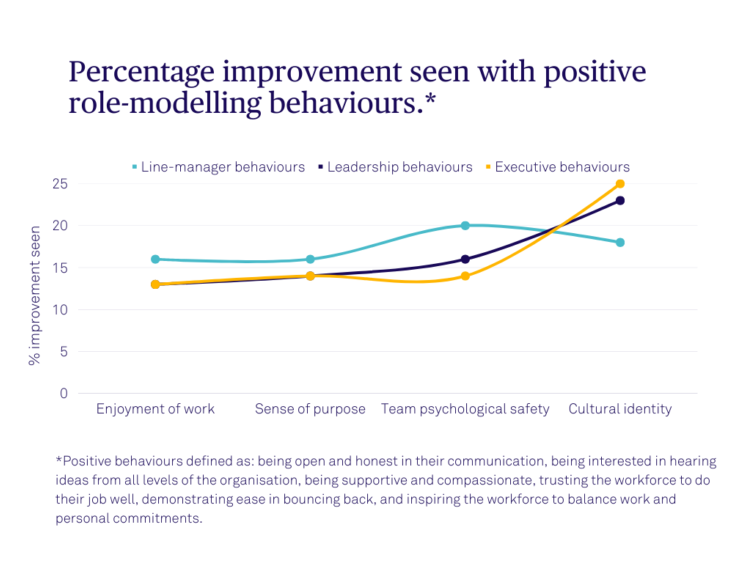“A leader is the one who can outline the broad vision and the direction and say, here's where we are going to go, here's why we need to go there, and here's how we are going to get there. A manager is the one who actually gets up under the hood and tunes the carburetor.”
– Mike Huckabee, American Politician
What's happening?
A Harvard Business Review article, first published back in 1977, argued that there are a number of key differences between managers and leaders. One area of difference is around goals: Abraham Zaleznik proposed that managers' goals are typically driven by necessity – they excel at defusing conflicts, making sure those involved are placated whilst also ensuring the organisation’s day-to-day business goals are reached. Leaders, on the other hand, have more active attitudes toward goals. They seek out opportunities, inspiring employees and empowering them by providing an organisational vision.
Fast-forward to 2023 and hierarchies within organisations are arguably more diverse than ever, not to mention the different styles of leadership driven by a multi-generational workforce. Amidst this, line-managers and leaders retain their essential roles, serving as linchpins in employee experience and steering the course toward organisational success. As such, understanding and leaning into these key differences (and the similarities, too), will be crucial when it comes to remaining adaptive and malleable in the constant and inevitably changing business world.
Positive's perspective
Our dataset indicates distinct impacts of line-managers, leaders, and executive leadership on the workforce. Specifically, line-managers show a greater influence on day-to-day social items, such as team psychological safety (+20%) and workplace satisfaction metrics – enjoyment in work and a sense of purpose are enhanced by 16%. Leadership and executive leadership, meanwhile, have a greater impact at the highest level. Their behaviours begin a cascade of cultural change with 23% and 25% improvement in cultural identity, respectively, when positive leadership behaviours are perceived (below).

There are also interesting nuances in the qualities the workforce looks for in line-managers and leadership. Our data suggests that the biggest predictor of a good line-manager is how willing they are to hear ideas and suggestions from all levels. The best predictors of good leadership, however, are more to do with their communication – are they supportive and compassionate to the workforce, and how open, honest and authentic are they in their communication? For the executive leadership, employees also look for support and compassion, but want to see them demonstrating resilience, bouncing back easily from a challenge.
Each layer of leadership – executive, leaders, line-managers – all have differential impacts on the workforce but are also significantly linked. If the executives demonstrate positive role-modelling behaviours, then leadership (r=.78, p<.001), and line-managers (r=.47, p<.001) are also significantly more likely to demonstrate positive behaviours at their level of leadership too. This is done through cascade. For example, we know that sense of belonging is key to sustaining a psychologically supportive culture and boosting the attraction and retention of talent. Our data shows that all three layers of leadership positively impact employees’ sense of belonging by 20% when they demonstrate positive behaviours themselves. Creating this contagion requires those who are taking positive action to be rewarded, and those who aren’t to be motivated to adapt their behaviours.
What can you do?
- Reward and recognise line-managers, leadership and executives who are positively role-modelling. Reinforcing these behaviours and demonstrating that they’re valued in the organisation will go a long way in driving a domino effect of change. An example of this in action is referred to in James Kerr’s book, Legacy, which discusses the core principles that underpin the All Blacks rugby team. Their first principle outlines how you should ‘never be too big to do the small things’ and was inspired by their team captains opting to sweep the sheds following a game. This simple act demonstrated to the rest of the team that this was something we ‘do around here’ and that no one should be exempt from it. Those players who accepted and partook in this rule were praised, and if new players tried to avoid it, they were called out. This nipped any issues in the bud before it could stick. The team made it clear there wasn’t space for selfishness; something that fostered their team cohesion; driving success. Taking a similar approach in business will drive the same outcomes.
- Share success stories. In many cases, the positive behaviours that mean the most are actually the smallest of actions. Sharing the ways in which great line-managers are managing their teams can inspire others and give them ideas for where to start. For example, starting a 1:1 with a simple (genuine) “How are you?” could be the personal nudge a colleague needs to be open and honest about some workplace troubles. Actively listening and putting a plan in action will complete the speak-up loop and help them feel supported. As a leader, you could ask for employee feedback on a certain topic, which would open up a listening and feedback loop – allowing other perspectives to be raised, collective intelligence to be harnessed, and for people to feel heard. When this is done well, others will see the benefits and want to try it themselves.
- Think about your organisation's communication channels. Communicating effectively as a leader can be hard – especially in a large organisation. But our data shows just how important it is to be open and authentic when communicating with the workforce. Think about how you can use personal stories or anecdotes to support the cultural development your organisation may be undergoing and to leave employees feeling that they belong and motivated to work towards a joint goal. Afterall…
“… people will forget what you said, people will forget what you did, but people will never forget how you made them feel.”
Maya Angeliou
Take the next step.
Our team of psychologists, neuroscientists, and business experts are here to inspire leadership with the science and tools to help them thrive in the ever-changing world of work. Find the right solution for your executives or leaders, today.






